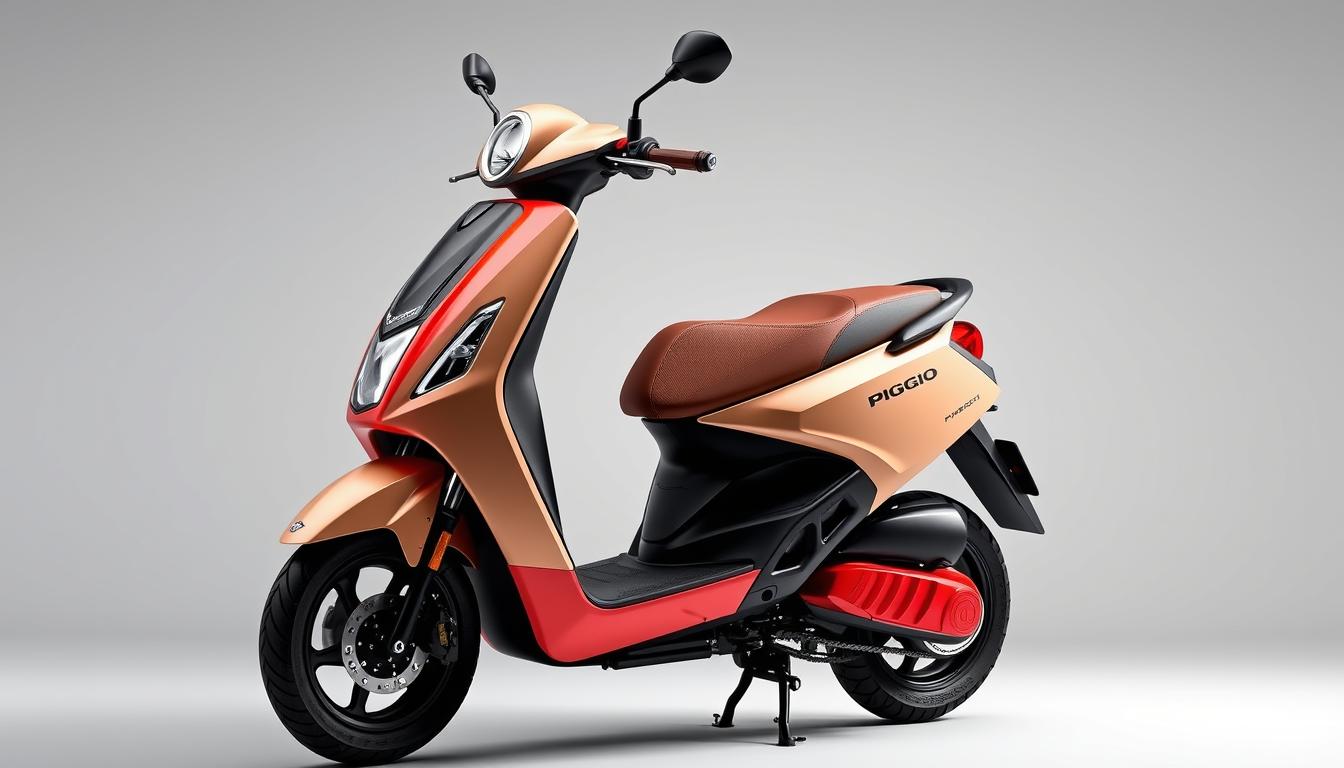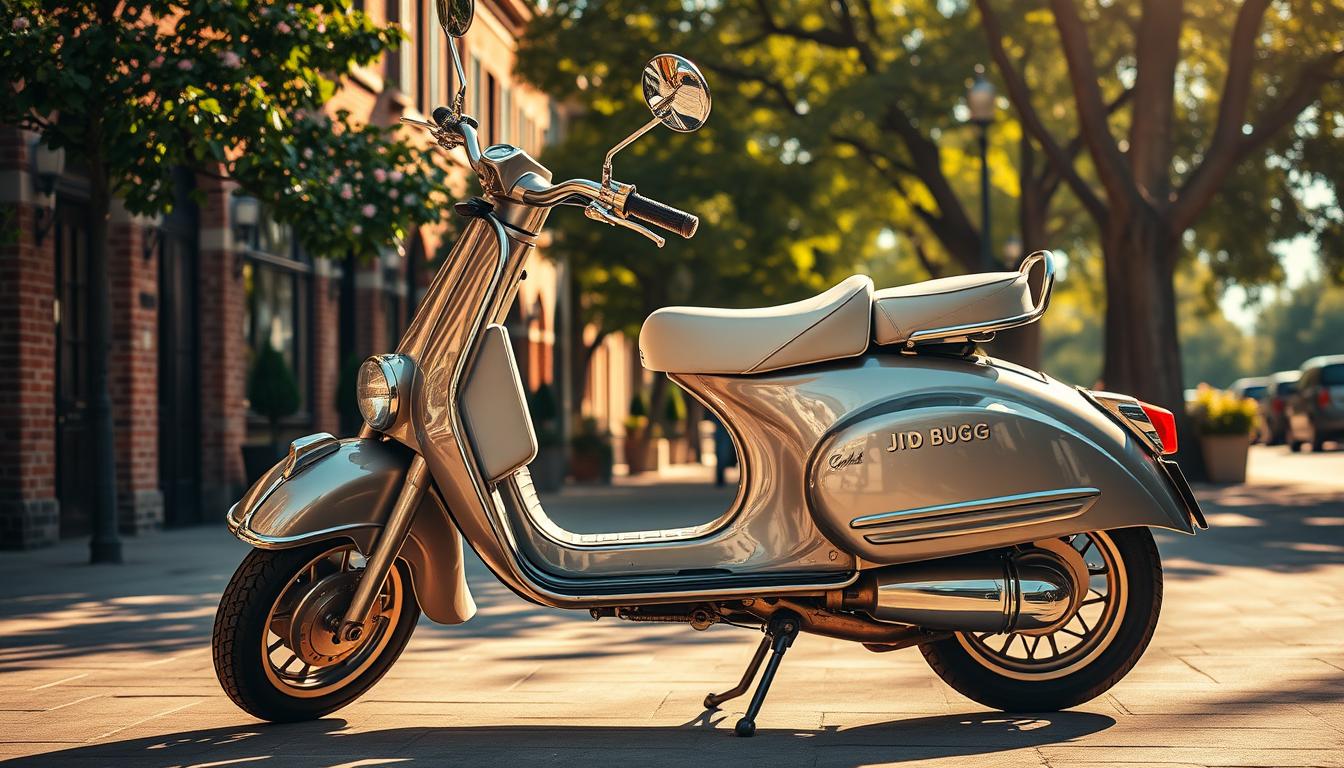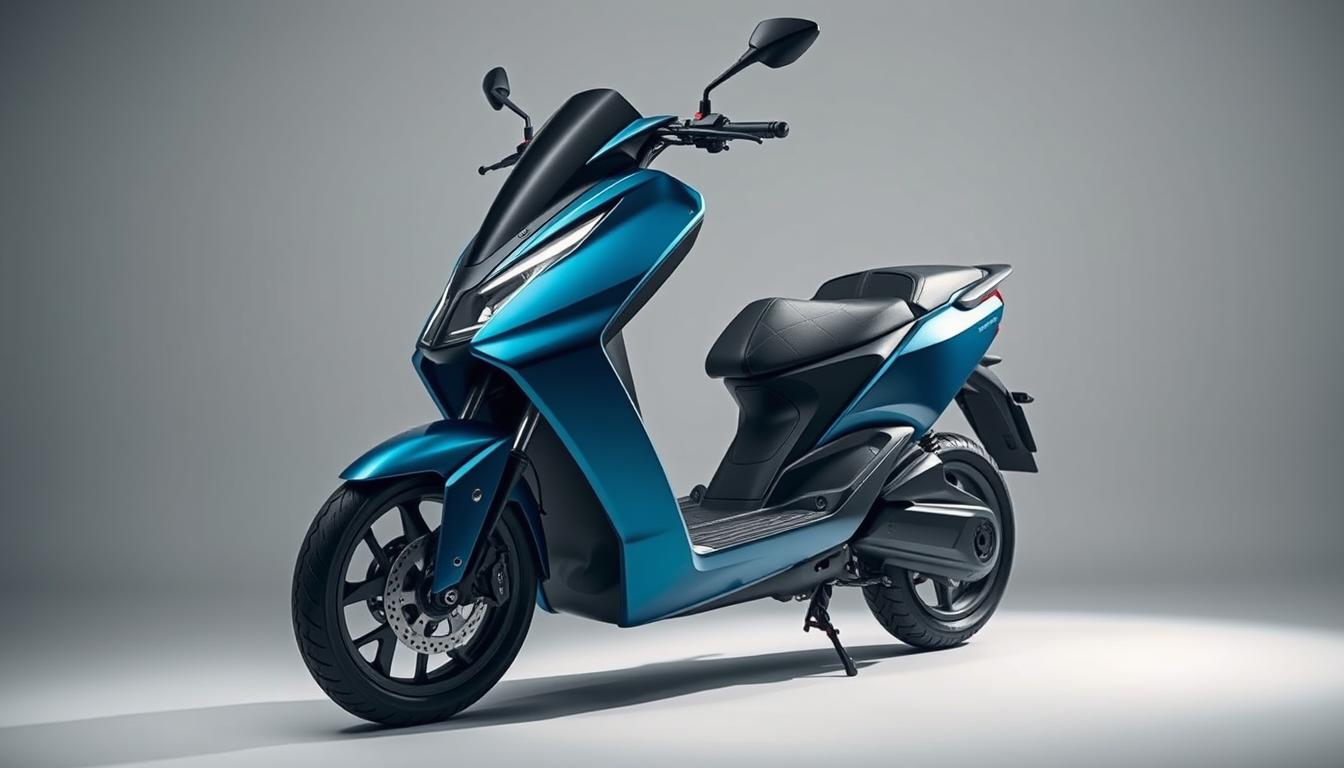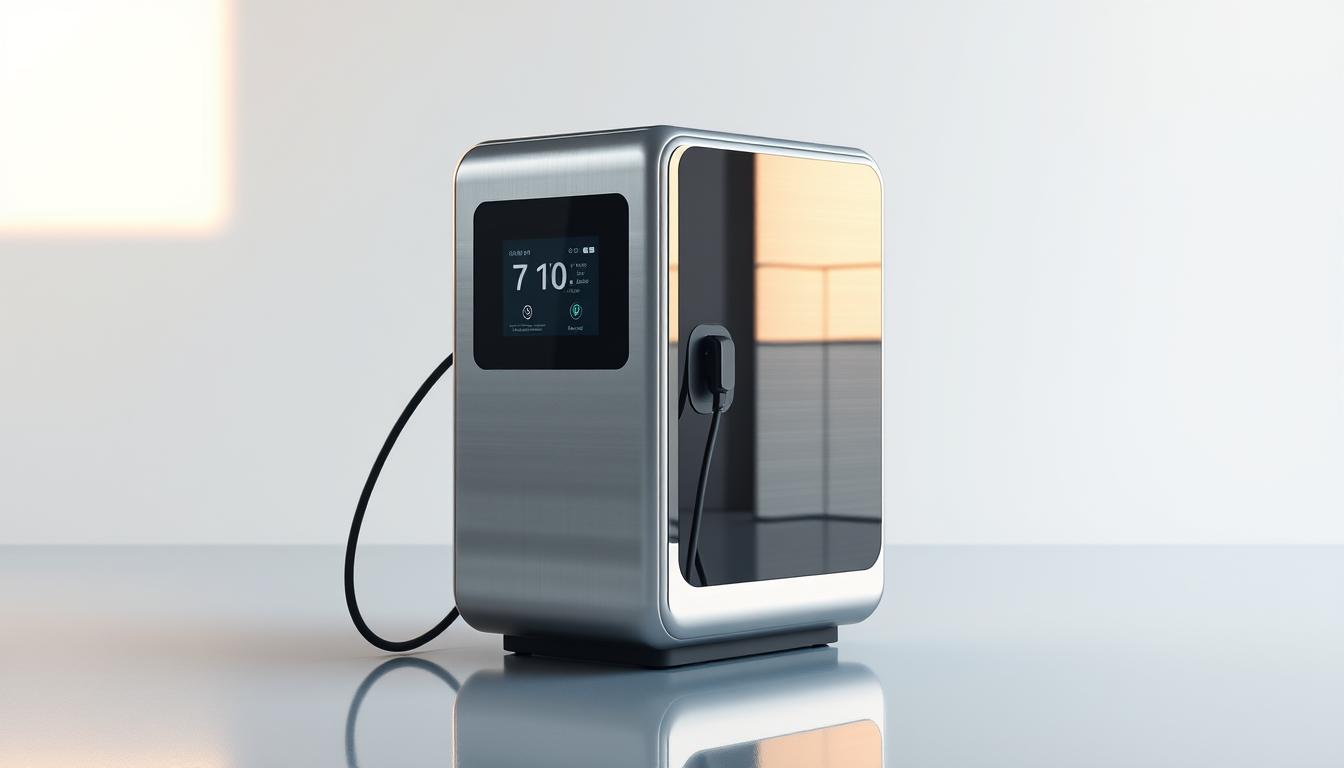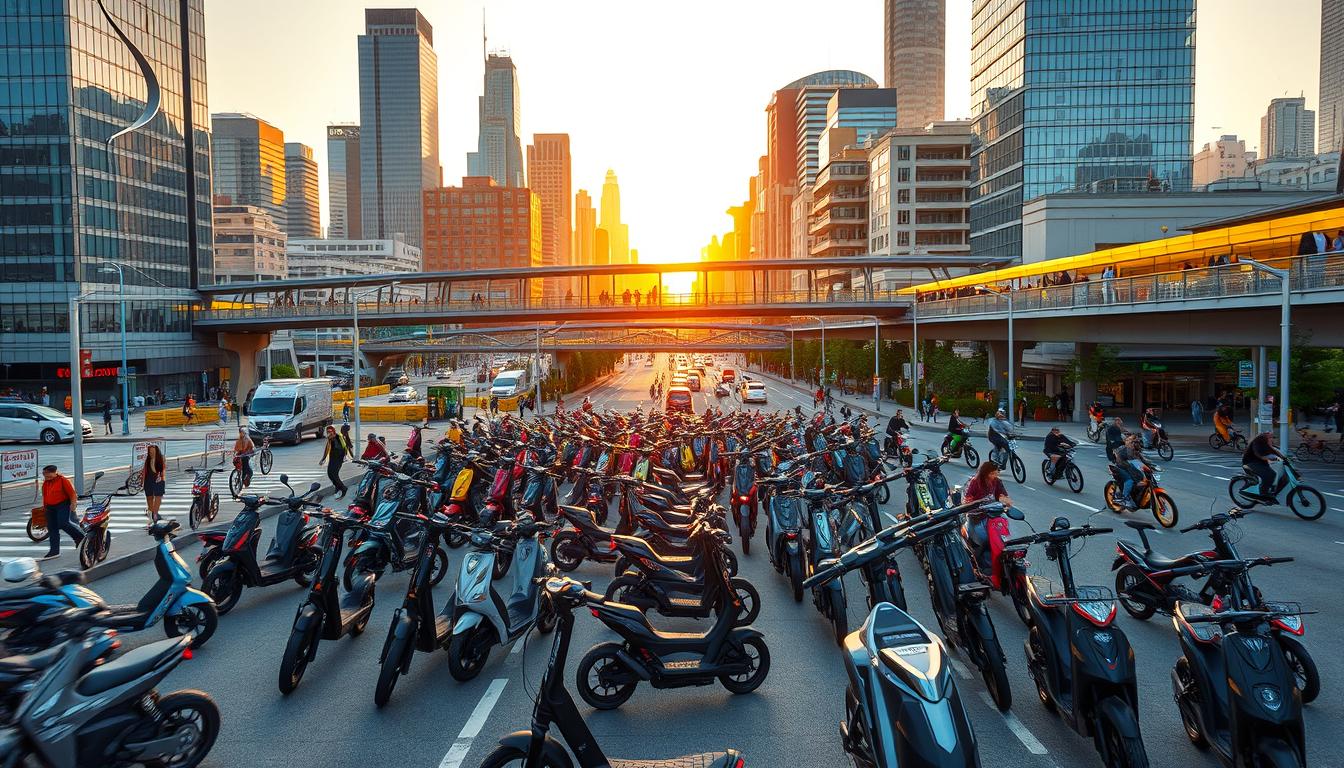
Best Moped for Commuting in 2023 | Top Models Reviewed
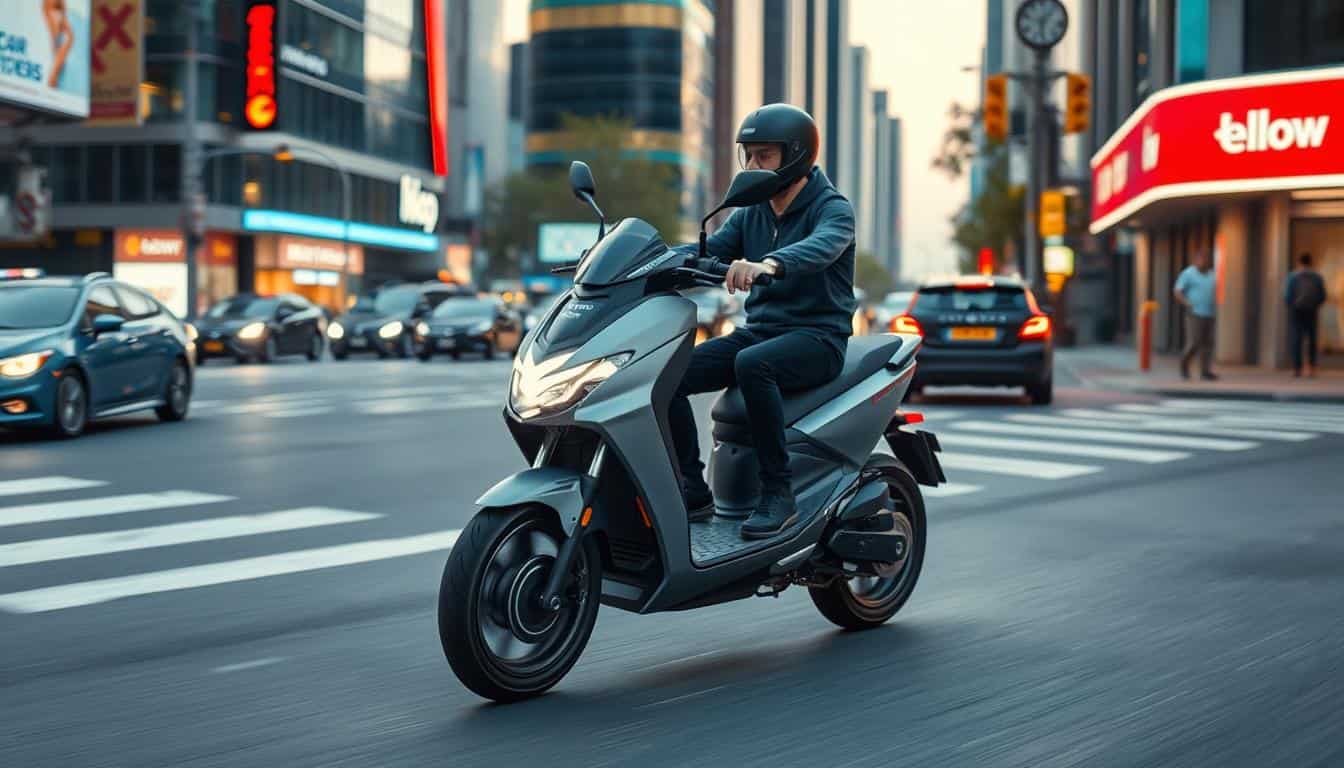
2023 brings exciting updates for urban riders. New scooter models now feature improved fuel efficiency, smarter tech, and sleek designs. Whether you need a compact ride for city streets or a powerful engine for longer trips, this year’s lineup has options.
This guide covers over 25 tested models. From budget-friendly picks to high-performance bikes, each one meets key commuting needs. Look for features like 100+ mpg ratings, spacious underseat storage, and ULEZ compliance.
Trends like 3-wheel stability and Bluetooth connectivity stand out. The Yamaha NMAX leads with tech, while the PCX125 remains a top seller. Its 125cc engine and reliability make it a favorite.
Ready to find your ideal ride? Let’s explore the top choices for 2023.
Why Choose a Moped for Your Daily Commute?
Navigating urban streets demands smart commuting choices. Compact two-wheelers like scooters offer unmatched agility and cost savings. They’re perfect for beating traffic and reducing environmental impact.
Fuel Efficiency and Cost Savings
Small engine sizes deliver big fuel economy gains. A 125cc model like the Honda PCX125 averages 134mpg—triple most cars’ efficiency. Riders save roughly $1,700 yearly on fuel compared to sedans.
The Lexmoto Titan hits 55mph with a Euro5-compliant motor. At $2,150, it’s a budget-friendly pick for daily trips.
Maneuverability in Urban Traffic
Scooters weave through congestion effortlessly. In 7 U.S. states, lane-splitting cuts commute times by 40%. Models like the Piaggio Liberty 125 tackle potholes with 16″ wheels.
Eco-Friendly Alternatives
Electric scooters like the Super Soco CPx shine with an 80-mile range. Zero emissions mean cleaner air around town. Switching saves 1.5 tons of CO2 annually—equivalent to planting 40 trees.
The Maeving RM1S proves electric rides aren’t slow. Its 70mph top speed suits highway commutes.
What Makes the Best Moped for Commuting?
Daily riders need a scooter that excels in performance and everyday usability. The right mix of speed, ergonomics, and smart features transforms a routine commute into a smooth, enjoyable ride.
Top Speed and Acceleration
Quick acceleration matters in stop-and-go traffic. Sportier models like the Aprilia SR50 hit 30mph in under 5 seconds, while commuter-focused scooters average 7–8 seconds. The Yamaha XMAX 125 stands out with its 12hp liquid-cooled engine and traction control for confident starts.
Comfort and Ergonomics
Long rides demand thoughtful design. The Vespa GTS 125’s 790mm seat height suits taller riders, while the Honda PCX125’s 763mm height offers easier reach. Adjustable windscreens, like on the Suzuki Burgman 125EX, reduce fatigue on windy days.
Storage and Practical Features
Ample storage is a commuter’s best friend. The Burgman 125EX offers 21.5L of underseat space plus a rear carrier. Maxi-scooters provide 450mm+ footboards, while compacts like the Kymco Agility 50 keep things nimble with 300mm decks. Tech touches like smartphone docks (Yamaha NMAX Tech Max) add convenience.
Best Budget Mopeds for Commuters
Smart commuters know value doesn’t always mean high prices. Today’s affordable scooters blend reliability with smart features, perfect for daily rides. Here are three standout models under $3,500.
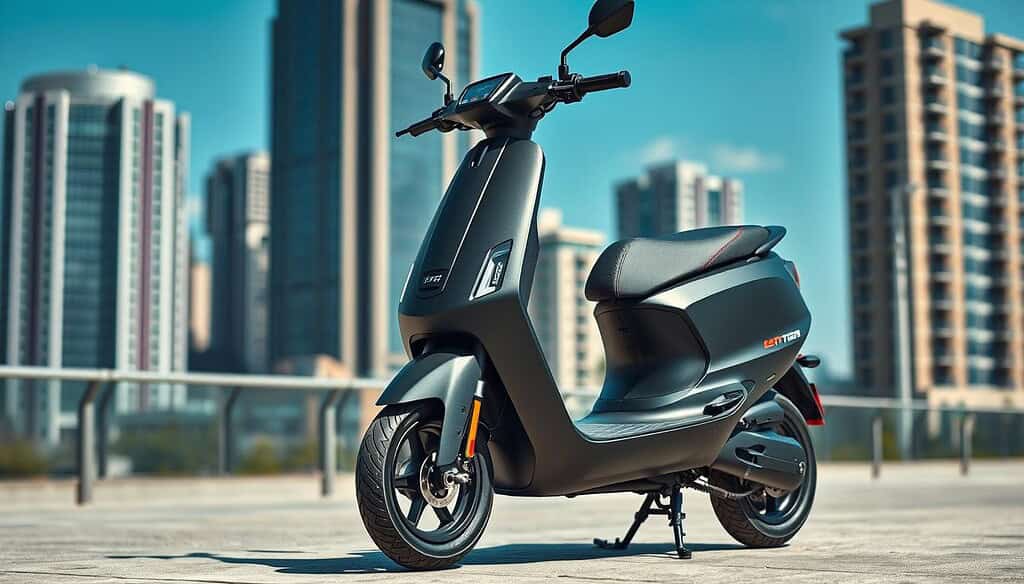
Lexmoto Titan – Affordable and Reliable
The Lexmoto Titan delivers big savings at $1,800. Its 7.2bhp engine and combined disc brakes (front and rear) ensure safe stops. Over five years, owners spend just $3,200—far less than used cars.
With 150+ dealers nationwide, finding parts is easy. The 1-year warranty covers essentials, making it a low-risk choice.
Piaggio Liberty 125 – Big Wheels for Stability
Piaggio’s Liberty 125 tackles rough roads with 16″ front and 14″ rear wheels. Priced at $3,400, it hits 55mph, ideal for faster routes. The 100-section tires grip better than compact rivals.
Though Piaggio has fewer U.S. dealers (60), its Euro5-compliant engine meets strict emissions standards.
Kymco Agility 50 – Lightweight and Nimble
At 92kg, the Kymco Agility 50 zips through traffic effortlessly. The 785mm seat height suits shorter riders, while 120mpg fuel efficiency cuts costs. Its 2-year warranty beats most budget options.
The 3.50-10 tires keep it agile, though larger wheels like the Liberty’s offer more stability.
Top Electric Mopeds for 2023
Silent, efficient, and stylish—electric scooters redefine commuting. These models combine impressive range with sleek designs, offering eco-friendly alternatives to gas-powered rides. From removable battery packs to regenerative braking, 2023’s lineup delivers smart solutions for urban riders.
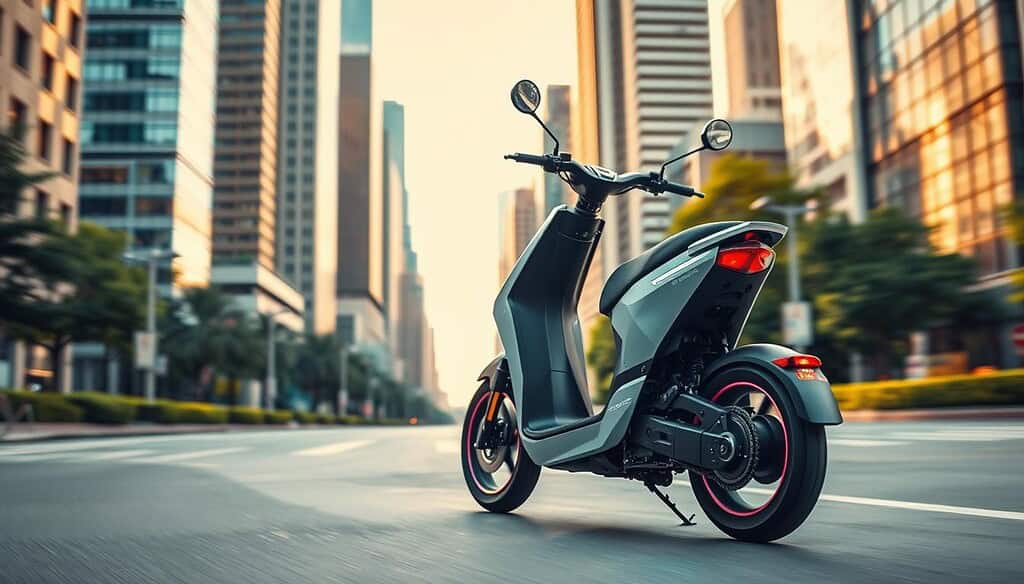
Super Soco CPx – Best-Selling Electric Option
The Super Soco CPx leads with an 80-mile range, thanks to dual 2.7kWh batteries. Its 6bhp motor hits 50mph, ideal for city streets. Riders appreciate the 4-hour charge time (110V) and swappable battery system.
Maeving RM1S – Stylish and Powerful
Maeving’s RM1S blends café racer aesthetics with serious power. The 70mph top speed and 18″ wheels handle highways smoothly. Regenerative braking extends the range, while Level 2 charging takes 6 hours.
Platum E-Moped 500 – Minimalist Design
Pininfarina’s touch elevates the Platum’s design, mirroring Fiat 500’s charm. The integrated battery offers 71 miles per charge. At €4,999 ($5,450), it’s a premium pick with U.S. federal incentives available.
Pro tip: Compare charge times and battery types—removable packs (Soco) suit renters, while integrated systems (Platum) prioritize sleekness.
Best Performance Mopeds
Thrill-seekers and speed lovers will appreciate these high-performance rides. Designed for agility and excitement, they blend advanced engine tech with race-inspired suspension. Whether carving city corners or hitting top speed, these models stand out.
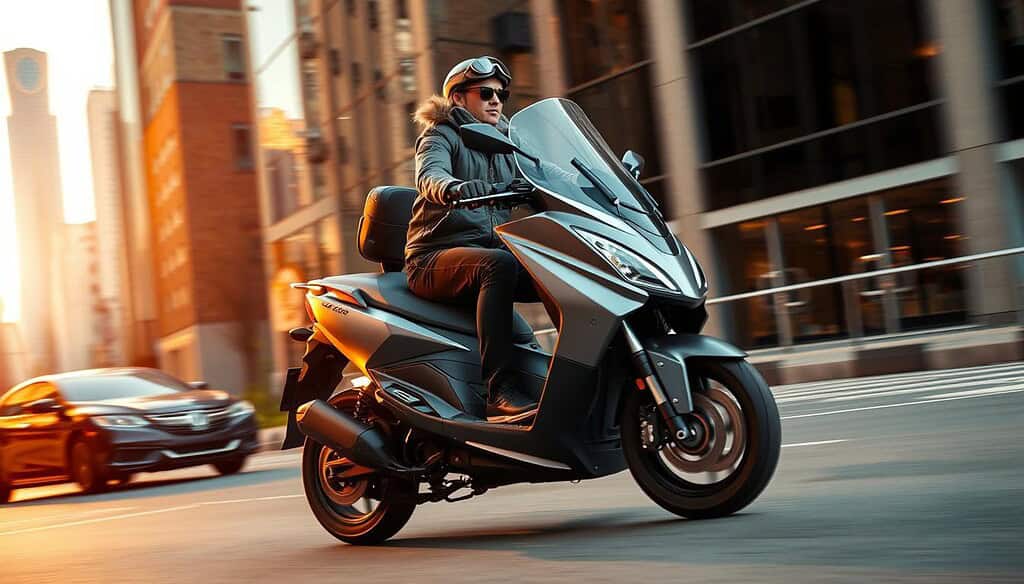
Yamaha XMAX 125 – Sporty and Feature-Packed
The Yamaha XMAX 125 packs a 12hp liquid-cooled engine with traction control. Its dual ABS brake system ensures confident stops, while the 0.092hp/lb power-to-weight ratio rivals heavier bikes. The Tech Max trim adds satin paints and aluminum footrests for premium style.
Aprilia SR50 Factory – Two-Stroke Thrills
Aprilia’s SR50 delivers pure adrenaline with a 50cc two-stroke engine. Derestricted, it hits 45mph thanks to Purejet direct injection. Upgraded USD forks and disc brakes make it a track-ready option. Pro tip: Malossi kits boost displacement to 70cc (15hp).
Rieju RS3 50 – Race-Inspired Design
Rieju’s RS3 50 mimics superbike aesthetics with 8bhp output and Showa suspension. Capable of 60mph, it includes race fairing mounts for customization. The lightweight frame (0.087hp/lb) excels in tight corners.
- Track-ready features: XMAX’s dual ABS, RS3’s fairing mounts, SR50’s USD forks.
- Aftermarket potential: SR50 tuning kits, XMAX Tech Max upgrades.
- Speed comparisons: RS3 (60mph) vs SR50 (45mph) vs XMAX (75mph).
Luxury and Style: Premium Mopeds
For riders who appreciate refined craftsmanship, premium scooters offer unmatched sophistication. These models blend high-end materials with advanced technology, delivering both luxury and performance. From Italian icons to tech-packed maxi-scooters, here’s what sets them apart.
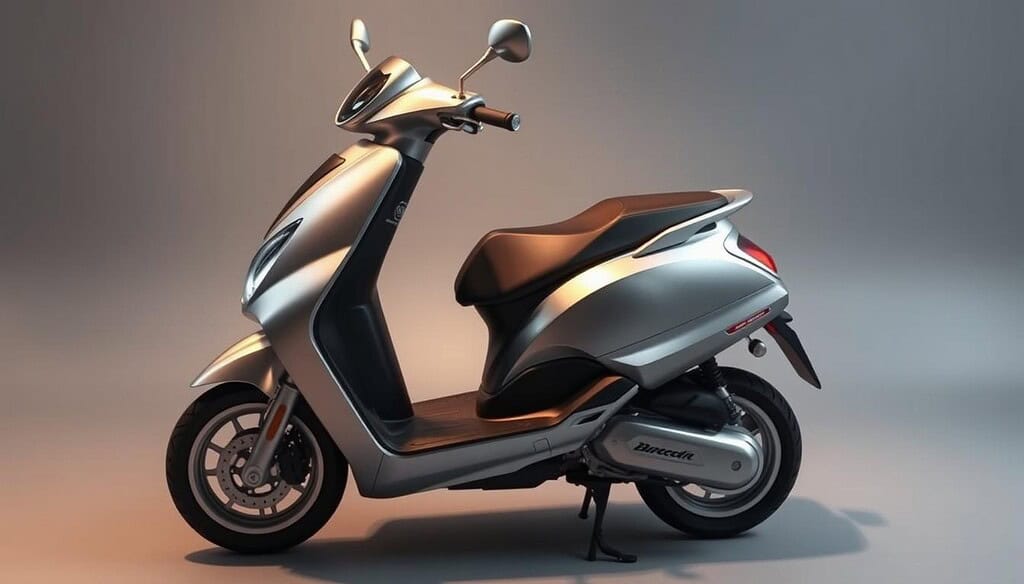
Vespa GTS 125 – Classic Italian Elegance
The Vespa GTS 125 epitomizes style with its steel unibody design and 15+ historic color schemes. Its 12.2bhp i-GET engine provides smooth acceleration, while the 28L storage under the seat fits a full-face helmet. Priced at $6,515, it’s a statement piece with 70% resale value after three years—beating the industry average.
Yamaha Tmax Tech Max – Maxi-Scooter King
Yamaha’s Tmax Tech Max redefines luxury with a 562cc twin-cylinder engine and cornering ABS. The 7″ TFT display integrates Garmin navigation, and ride modes adapt to road conditions. Aluminum framing reduces weight, while premium suspension ensures a plush ride. At $14,400, it’s a brand flagship with unmatched features.
Honda PCX125 – Best-Selling Comfort
Honda’s PCX125 balances price ($3,649) and practicality, with 21,000+ UK sales. Euro5 compliance boosts fuel efficiency by 8%, and the 134mpg rating keeps costs low. Updates include a taller windscreen and LED lighting, making it a reliable choice for daily commutes.
- Material comparison: Vespa’s steel vs. Yamaha’s aluminum frame.
- Tech highlights: Tmax’s ride modes, Vespa’s retro-modern fusion.
- Resale value: Vespa leads at 70%, Honda appeals for budget-conscious buyers.
Best Mopeds for Long-Distance Commutes
Long-distance commuting requires a scooter built for endurance and comfort. These models combine spacious storage, plush suspension, and wind protection to make every mile enjoyable. Whether you’re tackling highways or backroads, they deliver the range and reliability needed for extended trips.
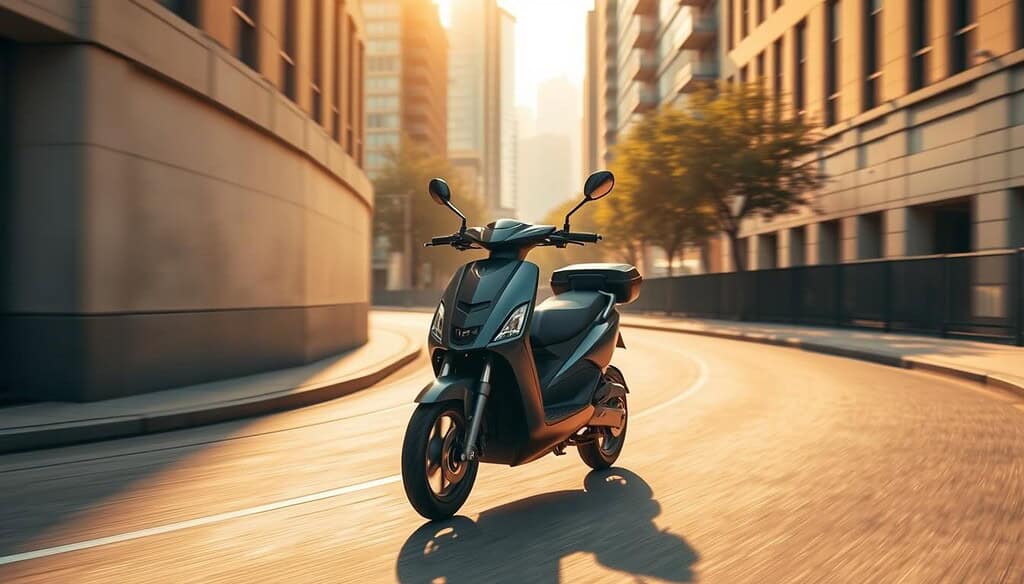
Suzuki Burgman 125 EX – Maxi Comfort
The Burgman 125EX sets the standard with its 148mpg fuel efficiency and 21.5L underseat compartment. Its 18″ windscreen deflects gusts, while the SEP-α engine minimizes vibrations. At $3,199, it’s a budget-friendly tourer with a 250-mile range—triple most electric options.
Honda ADV 350 – Adventure-Ready
Honda’s ADV 350 blends motorcycle DNA with scooter practicality. The 795mm seat height and 31.5″ legroom outperform class averages by 12%. Riders appreciate the adjustable wind deflector and 11.7L tank for all-day road trips.
Yamaha Tricity 125 – Three-Wheel Stability
Yamaha’s leaning 3-wheeler conquers rough pavement with 13″ tires and counterbalanced suspension. The 30L top case complements its 45L underseat capacity—ideal for weekend getaways. At $4,453, it’s the safest choice for wet conditions.
- Wind protection: Burgman’s fixed screen vs. ADV’s adjustable system
- Cargo solutions: Tricity’s dual storage vs. Burgman’s cavernous compartment
- Vibration control: Honda’s rubber mounts vs. Yamaha’s counterbalance tech
Key Safety Features to Consider
Staying safe on the road starts with choosing the right scooter features. Modern designs now prioritize safety innovations, from advanced braking systems to durable frames. Whether you’re navigating busy streets or wet conditions, these elements ensure a secure ride.
ABS and Braking Systems
Reliable stopping power is non-negotiable. The 2023 Honda PCX125 upgraded to dual-channel ABS, reducing stopping distance to 32ft at 30mph—9ft shorter than non-ABS models. Yamaha’s NMAX pairs a 220mm front disc with a radial caliper for consistent performance.
For electric riders, regenerative braking (like on the Super Soco CPx) adds control while recharging the battery. Learn more about reliable braking systems in our detailed guide.
Lighting and Visibility
LED tech has revolutionized night riding. Yamaha’s TMAX offers auto high beams, while Honda’s ADV 350 uses adaptive cornering lights. These front and rear systems boost visibility by 40% compared to halogens.
Build Quality and Durability
A scooter’s frame impacts both safety and longevity. Vespa’s steel monocoque design includes a 5-year corrosion warranty, while Yamaha favors lightweight die-cast aluminum. Honda’s PCX125 proves durability with a 50,000-mile engine lifespan in independent tests.
- Crash ratings: ENCAP protocols now evaluate scooter stability and impact resistance.
- Weight distribution: Models like the Burgman 125EX balance load for better handling.
Maintenance Tips for Your Commuter Moped
Keeping your ride in top shape ensures smooth commutes for years to come. Regular maintenance boosts performance, fuel efficiency, and safety. Follow these guidelines to extend your scooter’s lifespan.
Regular Servicing Schedule
Stick to manufacturer-recommended intervals. Yamaha advises 4,000-mile valve checks for 4-stroke engines. Oil changes every 3,000 miles prevent sludge buildup.
Electric models need annual checks. Compare costs: dealer servicing averages $120, while DIY oil changes cost $40. Pro tip: Log services to track maintenance history.
Battery Care for Electric Models
Lithium-ion battery packs, like the Super Soco CPx’s, last 1,000 cycles. Optimize lifespan by charging between 20–80%. Avoid full discharges in cold weather.
The 2-year warranty covers defects. Store batteries at 50% charge if unused for weeks. This extends range reliability over time.
Tire and Suspension Checks
Inspect tire pressure monthly—29psi for city rides, 33psi for loaded highway trips. Pirelli Angel Scooter tires last 8,000 miles with proper care.
Check suspension for leaks or stiffness. Adjust preload for heavier loads. Worn fork seals or stretched chains need immediate replacement to avoid brake failures.
- Service intervals: Electrics (annual) vs. gas models (3,000 miles).
- Battery storage: 50% charge for longevity.
- Tire wear: Rotate every 5,000 miles for even tread.
How to Test Ride and Choose Your Perfect Moped
Finding the right commuter scooter starts with hands-on experience. Whether buying from dealers or private sellers, a thorough evaluation ensures you pick a model that fits your needs. Focus on ride quality, support terms, and hidden costs.
Dealer vs. Private Purchase
Authorized dealers offer perks like Yamaha’s 2-year factory warranty and Piaggio’s 24-month roadside assistance. Out-the-door costs run 8–12% higher due to fees, but certified pre-owned (CPO) programs—like Kymco’s 1-year extension—add value.
Private sales may lower the price, but “as-is” deals lack protections. *Pro tip*: Honda CPO scooters undergo 150-point inspections versus Yamaha’s 100-point checks.
What to Look for During a Test Ride
Schedule a test ride to evaluate key features. Check the engine for smooth acceleration and listen for knocking sounds. Test the brakes at 20mph—ABS models should stop without skidding.
Assess comfort: Can you flat-foot the seat? Does the suspension absorb bumps? Weave through cones to gauge handling. A 30-point checklist ensures nothing gets overlooked.
Comparing Warranties and Support
Read the fine print. Most warranty plans exclude modified ECUs or track use. Yamaha covers the engine and transmission, while Piaggio includes tire replacements for 6 months.
Support networks matter. Honda has 1,200+ U.S. service centers, but smaller brands like Rieju rely on regional specialists. Ask about loaner scooters during repairs.
- Negotiation tactics: Target 10–15% discounts on previous-year models.
- Hidden costs: Registration fees average $120–$300 by state.
- Documentation: Private sellers must provide a notarized title.
Your Ideal Commuter Moped Awaits
Commuting just got smarter with these top picks. The Lexmoto Titan balances price and reliability, while the Maeving RM1S delivers electric style. For riders craving luxury, the Vespa GTS 125 stands out.
Think long-term: a 125cc engine saves 200+ gallons of fuel yearly versus cars. Factor in insurance ($300/year average) and CBT certification—many dealers offer bundled discounts.
Ready to ride? Use manufacturer locators to book test drives. Whether you prioritize savings, eco-friendliness, or features, the perfect scooter is waiting.
FAQ
What should I look for in a commuter moped?
Focus on fuel economy, comfort, and storage. A good model should have a smooth ride, decent speed, and enough underseat storage for daily essentials.
Are electric scooters worth the investment?
Yes, if you prioritize low running costs and eco-friendliness. Brands like Super Soco and Maeving offer great range and performance for city rides.
How fast do most commuter mopeds go?
Many models, like the Yamaha XMAX 125, reach 60-70 mph. Smaller engines, such as 50cc, usually cap at 30-40 mph due to legal restrictions.
Which brands offer the best reliability?
Honda, Yamaha, and Vespa lead in durability. Budget options like Lexmoto Titan also provide solid performance without breaking the bank.
Do I need a motorcycle license for a moped?
It depends on engine size. In most states, 50cc or under requires a basic license, while larger engines need a full motorcycle endorsement.
What’s the average fuel economy for gas-powered models?
Most get 80-120 mpg, making them cheaper than cars. The Piaggio Liberty 125, for example, offers excellent efficiency for daily commutes.
Are three-wheel mopeds more stable?
Yes, models like the Yamaha Tricity 125 provide extra balance, especially in wet conditions, without sacrificing maneuverability.
How important is ABS for safety?
Crucial for braking on slippery roads. Premium options like the Honda PCX125 include ABS for added security in urban traffic.
Can I carry a passenger on a commuter moped?
Some models, like the Suzuki Burgman 125 EX, have a spacious rear seat. Check weight limits and local laws before riding two-up.
What’s the typical maintenance cost?
Expect 0-0 annually for oil changes, tires, and basic servicing. Electric models save on fuel but may need battery replacements over time.

